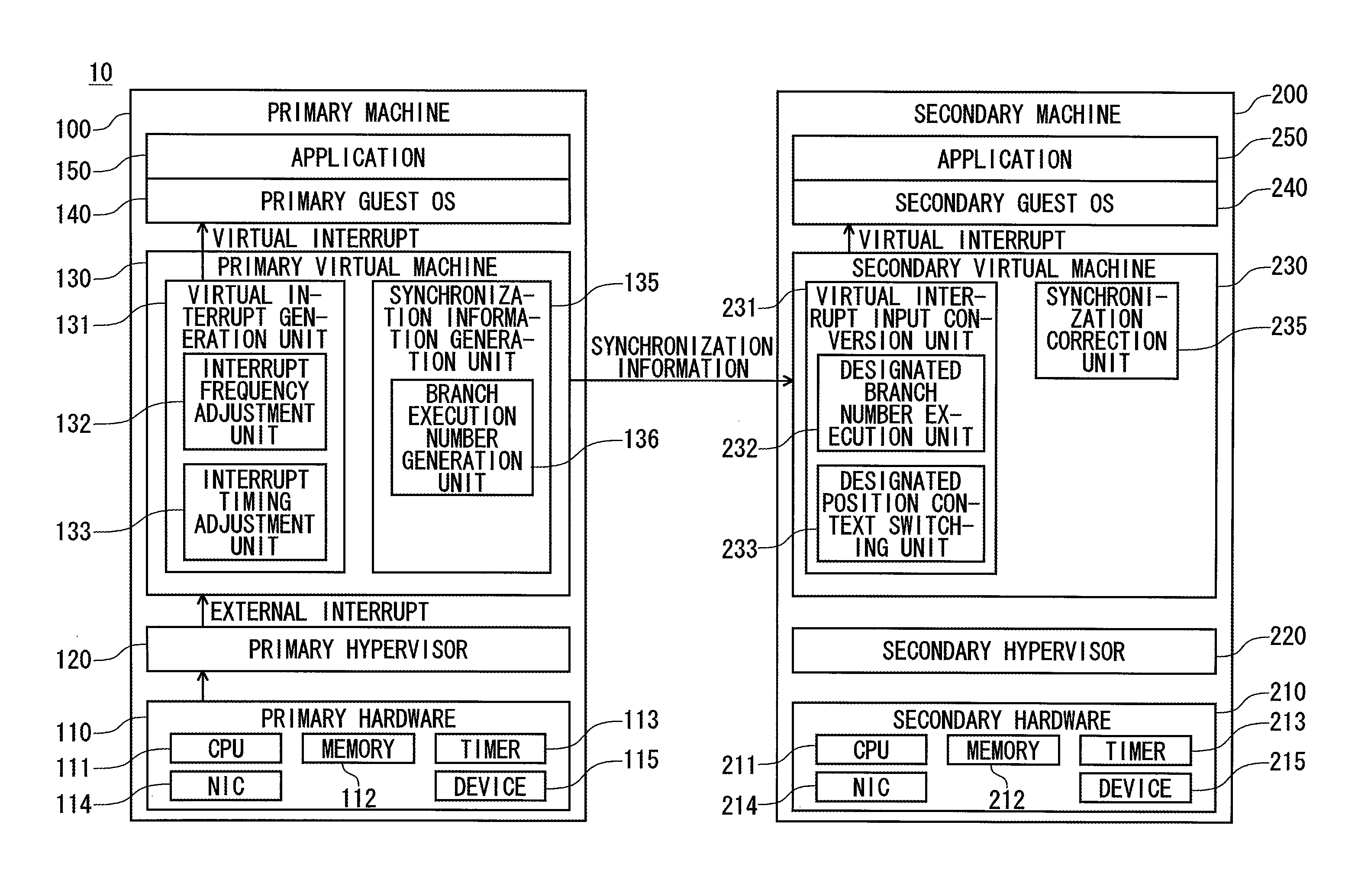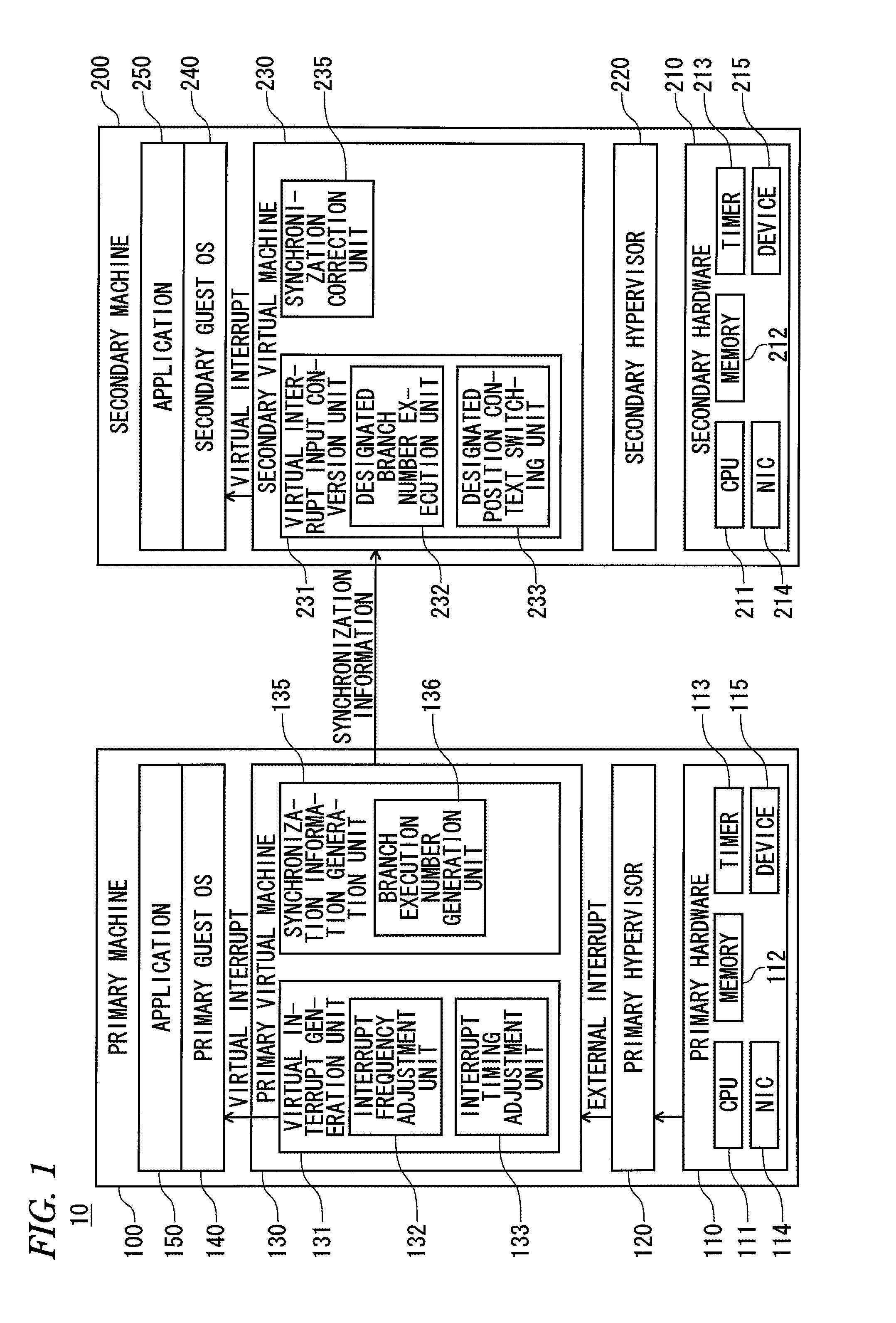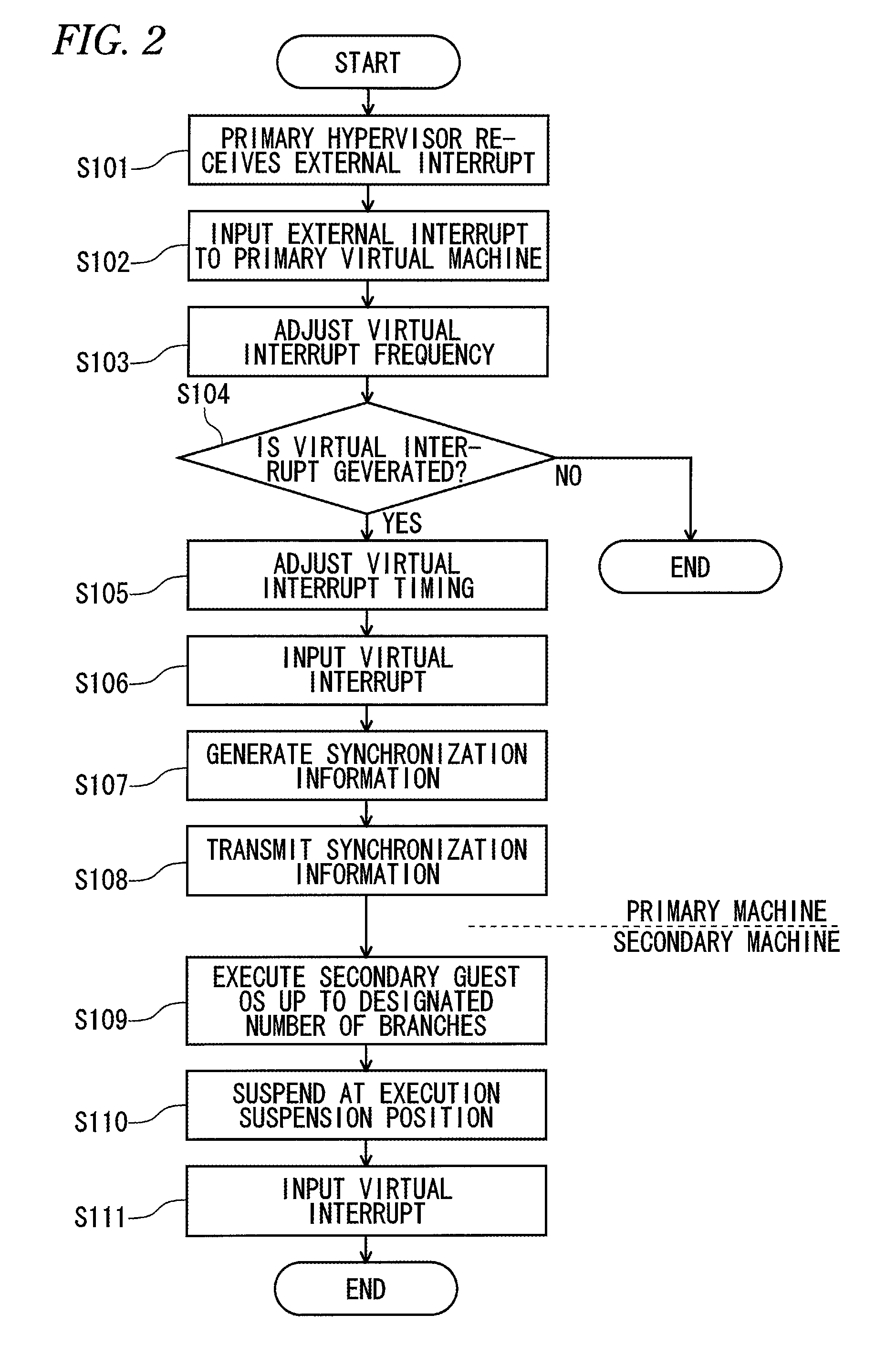Fault tolerant system and method for performing fault tolerant
a fault tolerance and virtual machine technology, applied in the field of fault tolerance systems using virtual machines, can solve the problems of 740/b> not being able to be suspended, unavoidably being suspended beyond, and the performance of both hardware may not be the same with each other, and achieve the effect of reducing the execution speed
- Summary
- Abstract
- Description
- Claims
- Application Information
AI Technical Summary
Benefits of technology
Problems solved by technology
Method used
Image
Examples
first embodiment
[0116]As a first embodiment, the operation for a case where the CPU 111 of the primary machine 100 and the CPU 211 of the secondary machine 200 have the same architecture will be described. In the present specification, the same CPU architecture means that a CPU instruction set has compatibility between the two processors.
[0117]In this case, the primary virtual machine 130 and the secondary virtual machine 230 execute the parallel synchronization operation by synchronizing CPU instruction levels. For that reason, in both of the virtual machines (130, 230), the programs of the guest OS (140, 240) and the applications (150, 250) have a code format compiled to a native CPU instruction code with respect to the CPU (111, 211) as usual. It is assumed that this parallel synchronization operation is called “CPU instruction synchronization mode”.
(Interrupt Frequency Adjusting Operation)
[0118]First, interrupt frequency adjusting operation (S103) executed by the interrupt frequency adjustment ...
second embodiment
[0151]As a second embodiment, the operation when the CPU 111 of the primary machine 100 and the CPU 211 of the secondary machine 200 have the different architectures will be described. In the present specification, a different CPU architecture means that a CPU instruction set has no compatibility between the two processors.
[0152]In this case, the primary virtual machine 130 and the secondary virtual machine 230 execute the parallel synchronization operation by synchronizing intermediate language levels. In the present specification, “intermediate language” is also called “intermediate code”, or “byte code”, and represents a language of intermediate representation which is intermediate between a source code of a high-level language and a code of a machine language. The parallel synchronization operation is called “intermediate language synchronization mode”.
[0153]Because the CPU instruction set has no compatibility between both of the virtual machines (130, 230), the programs of the ...
third embodiment
[0163]Subsequently, as a third embodiment, the parallel synchronization operation when the hardware configuration is different between the primary machine 100 and the secondary machine 200 will be described. The primary hardware 110 of the primary machine 100 and the secondary hardware 210 of the secondary machine 200 are each configured by a variety of hardware devices such as a CPU (111, 211), a memory (112, 212), a device (115, 215) such as storage. However, the functions or the performances of both the hardware may not be the same with each other.
[0164]For example, there may be a case where the specification of the CPUs (111, 211) is different from each other, or the capacity of the memories (112, 212) is different from each other. Also, in the operation process of the fault tolerant system 10, both of the devices (115, 215) are different due to the replacement of the devices (115, 215).
[0165]For that reason, the primary virtual machine 130 and the secondary virtual machine 230 ...
PUM
 Login to View More
Login to View More Abstract
Description
Claims
Application Information
 Login to View More
Login to View More - R&D
- Intellectual Property
- Life Sciences
- Materials
- Tech Scout
- Unparalleled Data Quality
- Higher Quality Content
- 60% Fewer Hallucinations
Browse by: Latest US Patents, China's latest patents, Technical Efficacy Thesaurus, Application Domain, Technology Topic, Popular Technical Reports.
© 2025 PatSnap. All rights reserved.Legal|Privacy policy|Modern Slavery Act Transparency Statement|Sitemap|About US| Contact US: help@patsnap.com



